 Tank of the Month
Tank of the Month
Tank of the Month
Pawel Babiarz's (pan_natan) Reef Aquarium
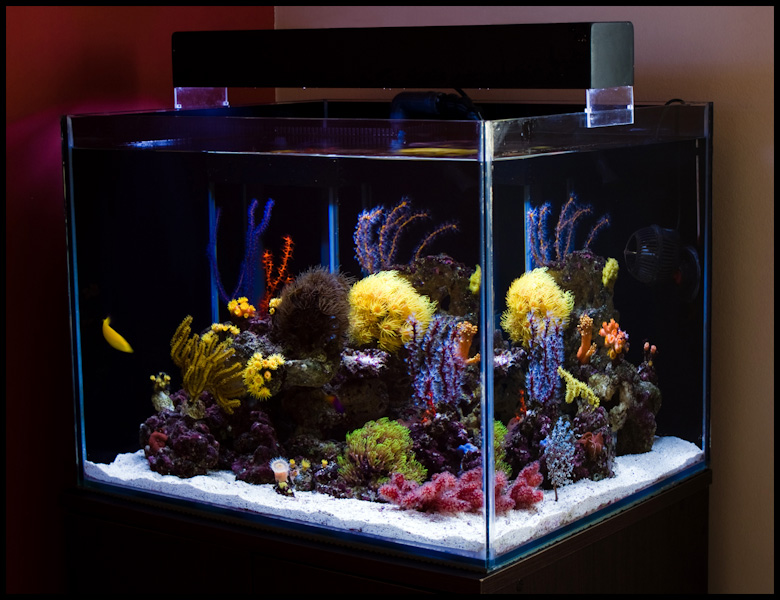 |
Introduction and Background
Tank of the Month? This has been the biggest surprise ever. My little reef among the best aquariums that are easily ten times bigger. I am honoured. First, I would like to thank all the people who had time to read my thread on the Reef Central forum. Second, to the people who thought that my aquarium was good enough for Tank of the Month.
Five years ago I bought my little 5 liter (1.32 US gallons) freshwater aquarium with one fish. Soon I realized that 5 liters didn’t accommodate even that one fish, leading me to start a bigger freshwater aquarium. I became bored very quickly with freshwater. One day I saw a 7 liter (1.8 US gallons) saltwater tank and I instantly became besotted with the colors and shapes. At that time I didn’t even know this underwater world existed. That day I decided I was going to start my own saltwater reef.
A couple of month later I purchased a 25 liter (6.6 US gallon) nano-reef and my saltwater adventure began! Two years ago, when I went to my local aquatic shop to find some nice corals, I saw a Swiftia exserta sea fan. I immediately fell in love with it. This is when I decided to keep non-photosynthetic corals. I remember the owner of the local shop, Lukasz Kur saying, "It needs to be fed every day, are you gonna feed it?”… I agreed, took it home, and started to feed. Soon I quickly ran out of space in that little aquarium, so I set up my 63 liter (17g) tank.
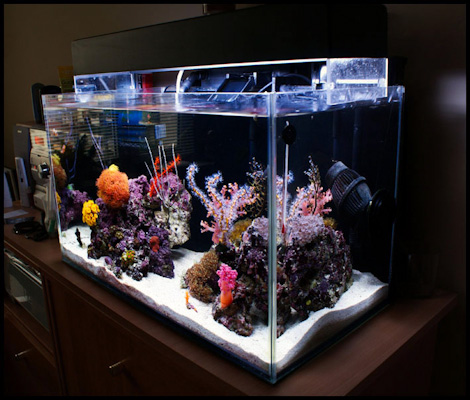 |
One year later, when I gained more experience, I started to design a new tank setup. The present one can be seen through my photographs. I never wanted a big tank; I always said, "Good things come in small packages”. I knew that I would rather have a smaller tank that was perfect in every inch and corner. I always hoped that one day my aquarium would be perfect.
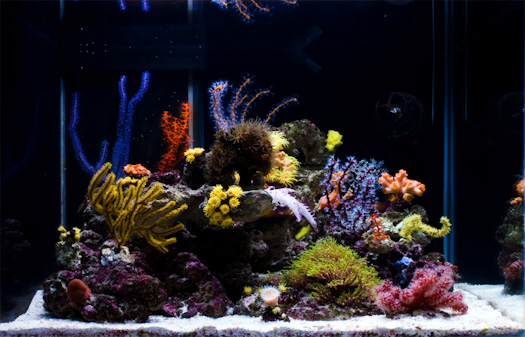 |
Current System
The total water capacity of the present system is about 160 liters (42 US gallons). The display currently holds roughly 120 liters (32 US gallons) and the sump has a capacity of 40 liters (11 US gallons). The tank dimensions are 60 x 50 x 45 cm (24”x20”x18”). The tank is built from 8mm thick glass, viewing sides being on the front and right side. There is a black background on the other sides.
 |
When I designed the sump, I tried to keep simplicity in mind. The sump is divided into three chambers. In the first chamber houses the protein skimmer, the second contains the return pump and the third is for the automatic top up. The cabinet that houses the sump has its own separate electrical installation.
System Profile
• Display tank: 60x50x45 cm ~ 135 liters (24’x20’x18’ 35 US gallons)
• Sump: 45x45x40 cm 18’x18’x16’, (water amount is approx. 12 US gallons)
• Skimmer: Deltec APF600; AquaEl 650 l/h
• Lighting: 1x24w ATI AquaBlue Special, DIY lamp
• Circulation: Koralia 2 and Koralia nano
• Return Pump: New Jet 3000
• Heater: AquaEl 200 W
Filtration and Circulation
In non-photosynthetic aquariums filtration and water quality are the main part of the game. Due to the constant feedings leading to a lot of food in the water, nitrates tend to rise quickly. In the past I used the vodka method to help rid the system of nitrates, which proved to be a good method, but I don’t use it any more. In my current system I started to use a refugium but quickly abandoned this method because I found it was insufficient for my needs. The refugium algae could not keep pace with the production of nitrates. Right now I’m using the pure Berlin method. This consists of live rock and an oversized protein skimmer, my Deltec APF600, doing all the work.
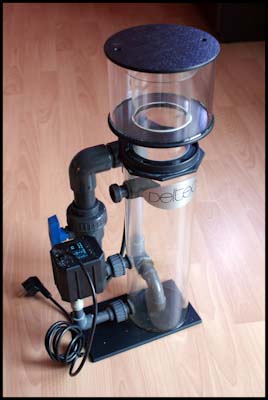 |
A Hydor Koralia 2 and a Koralia Nano provide water circulation within the display. The recirculation pump between the sump and display is the New Jet 3000. In the past, I tried many different pumps, but figured out that my non-photosynthetic corals do not seem to tolerate strong water movement. This is why I keep my water circulation at only 25x tank volume per hour.
Lighting
Non-photosynthetic corals do not require light to grow so I use lighting more for decoration. I use a single 24W ATI Aquablu Special bulb.
One of the biggest advantages of keeping a non-photosynthetic tank is energy savings. Also, maintenance is cheaper as I do not need to change the bulb every 6 months. One downfall with this approach is that without a lot of light or different coloured bulbs it is hard to obtain eye-catching colours seen in most current reef tanks. The other disadvantage to not using much light is that I find it difficult to take good pictures.
 |
Water Parameters
The only things I measure are specific gravity (1.024 SG), temperature (25oC), and nitrates (kept below 25 mg/L). I find that non-photosynthetic corals do not require high and stable calcium levels, as well as some other parameters, so I simply don’t measure them. I stopped measuring these parameters about year ago when I ran out of test kits. I assume that if corals are flourishing with good growth rates and polyp extension that everything is fine.
|
Water Parameters:
|
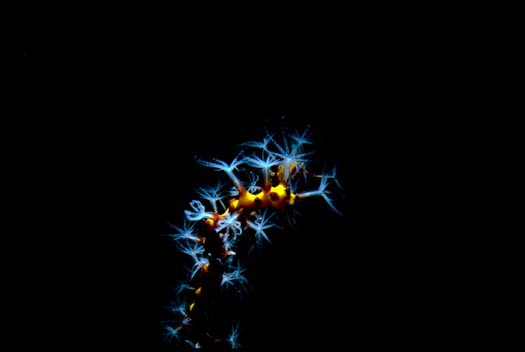 |
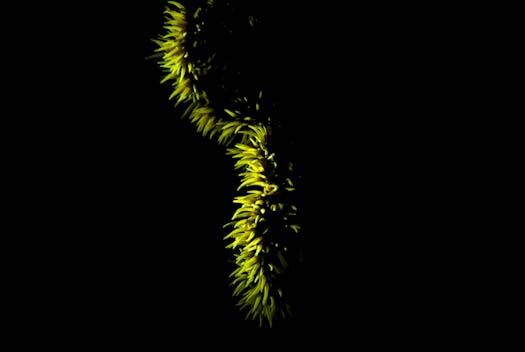 |
Feeding, Maintenance, & Supplements
Once a week I change 15-25 liters. This amount doesn’t seem to stress the corals and makes the water fresher. For the water changes, I use RODI water and ATI salt. Sometimes when the nitrates rise to 30-50 mg/l I do an additional 40-50% water change. Due to regular water changes there is no need for additional supplementation other than Prodibio/BioDigest once a week.
Feeding is the fun part! I stick to the ‘old school’ method of feeding manually. I currently do not use any type of automated or constant feeding systems. Although in the future I may make one to save some time.
The menu consists mainly of frozen foods, such as Mysis, Green Plankton, Red Plankton, Prawn Eggs, and Rotifers, which is fed 1-3x per day. The dry foods (Fauna Marine: Ultra Pac, Ultra Calm, Ultra Min F, Ultra SeaFan; Preis Coral Vitalizer, GroTech - NutriMarine Instant, Aquarium Systems – ZoPlan) are added 1 - 3x per week. Multiple feedings are done throughout the day for the sea fans and every night I feed the LPS corals.
Sometimes people give me corals that are nearly at their end of life. Bringing them back is hard but I find it very rewarding to watch how their recovery. Below you can see the recovery of Tubastrea aurea:
Live Stock
|
Live Stock:
|
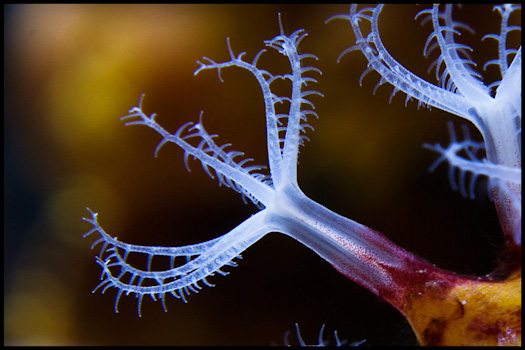 |
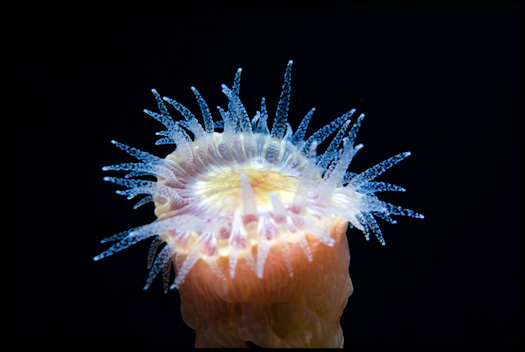 |
 |
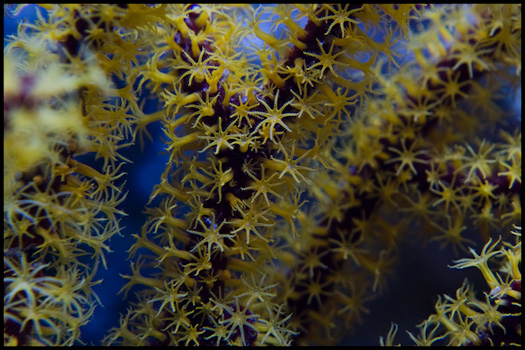 |
 |
 |
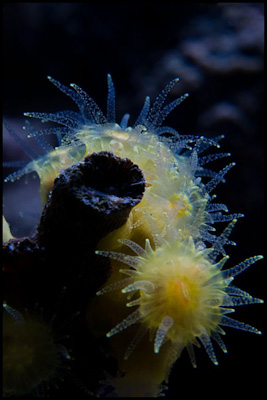 |
Acknowledgements
Many thanks to Reef Central for giving me the opportunity to show my tank on Reefkeeping Magazine, to my father for all support, and to my girlfriend Kasia for keeping everything alive when traveling. I would like to thank Lukasz Kur and Sylwia (Merriq) for their knowledge and expertise. Also, to all people who helped me from aqua-reef.pl and nano-reef.pl forums for giving me strength to continue on! Check Ralphs Ad and Fry's Ad.
 |
Feel free to comment or ask questions about my tank in the Tank of the Month thread on Reef Central.



